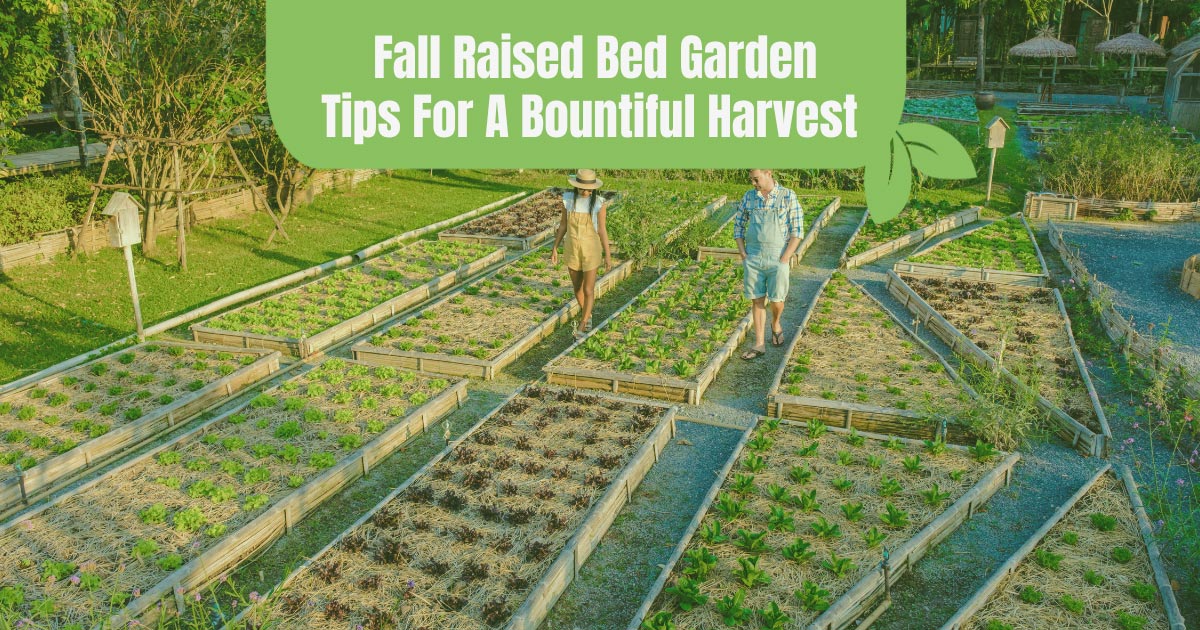
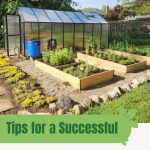


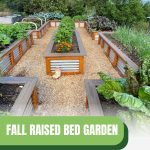
Transitioning your raised bed into a fall raised bed garden offers a refreshing opportunity to cultivate a variety of cool-weather crops that thrive in the autumn’s unique conditions.
This season, the focus shifts towards preparing the soil with nutrient-rich amendments, selecting plants that are well-suited to shorter, cooler days, and implementing strategies to protect these tender greens from early frosts.
With careful planning and a selection of the right vegetables and flowers, your garden can continue to be a source of joy and bounty even as the seasons change.

Transitioning your raised bed garden into fall
As the vibrant growth of summer crops begins to wane, it’s the perfect moment to refresh your raised beds for the autumn season.
This transition period is an opportunity to introduce a new array of plants that flourish in the cooler months, ensuring your garden remains productive and beautiful. Here’s how to smoothly transition your garden for the fall:
Step 1: Assess and clear
Start by evaluating each plant’s current state in your garden. Identify which ones are still thriving and which have completed their life cycle. This assessment is key to understanding which plants can stay and which should be removed.
In our experience, removing spent plants isn’t just about tidying up; it’s a strategic move to prevent disease and pests from overwintering in your garden. However, it’s important to approach this task with care, ensuring you don’t disturb the roots of neighboring plants that will continue to grow.
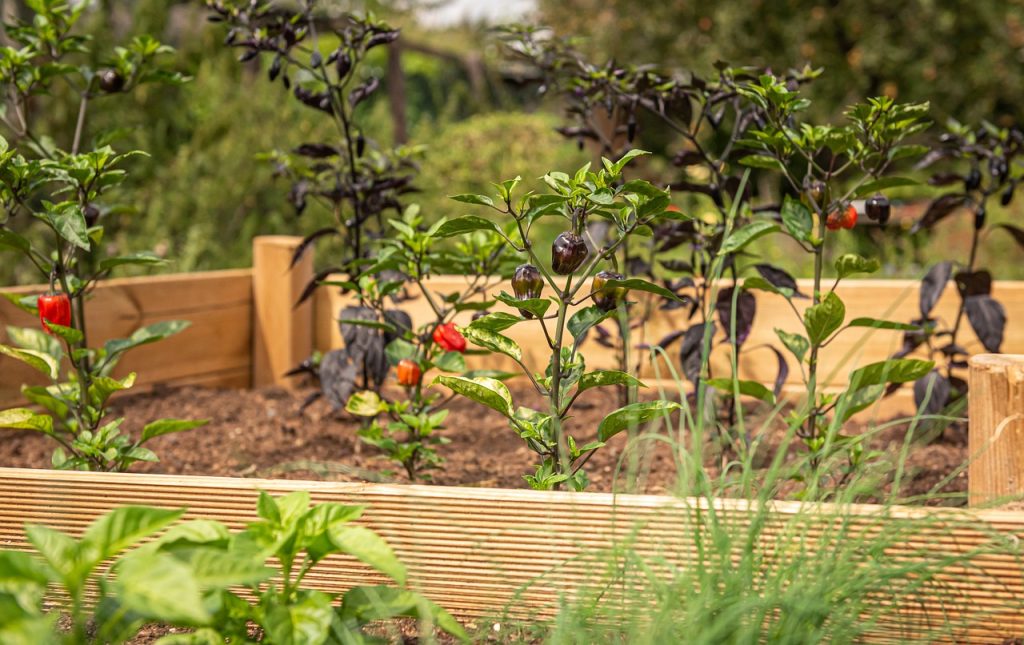
This step sets the stage for a healthy fall garden by eliminating competition for resources and making space for new plantings.
Step 2: Soil revival
After a season of supporting vigorous growth, your garden’s soil will have expended much of its nutrient reserves, and properly preparing soil for a raised bed is vital. Replenishing these nutrients is essential for the success of your next crop.
Begin by gently loosening the soil’s surface without disturbing the existing root systems. Then, enrich the soil by adding a layer of high-quality compost or aged manure.
This not only restores vital nutrients but also improves soil structure and moisture retention, creating an ideal environment for young plants to thrive.
If your soil is particularly depleted, consider incorporating a balanced, slow-release organic fertilizer to provide a steady supply of nutrients throughout the fall.
If you want to start from scratch, be sure to read our guides on what to fill raised beds with and composting in raised beds.
Step 3: Select your plants
Choosing plants that are suited to the cooler, shorter days of fall is crucial for a successful transition. Look for varieties known for their cold tolerance and shorter maturity times.
Leafy greens like kale, spinach, and Swiss chard are excellent choices, as they can handle light frosts and even taste sweeter after a chill. Root vegetables such as carrots, beets, and garlic are also ideal for fall planting, offering a bountiful harvest before the deep freeze sets in.

Don’t forget about herbs like parsley and cilantro, which can continue to flourish in the cooler weather, adding fresh flavors to your autumn dishes.
After years of gardening, we’ve found that when selecting plants, you should consider their growth habits and space requirements to ensure your garden remains well-organized and accessible. Considering water requirements for raised beds watering is also important.
Best plants for a fall raised bed garden
The arrival of fall doesn’t mean the end of the gardening season, especially if you’re using one of our raised beds.
In fact, it marks the beginning of a period where certain crops can truly excel. Here are some top performers that have proven their worth in our gardens, along with a few additional suggestions to diversify your autumnal harvest.
Kale
Kale stands out as a garden champion in the cooler months. Its hardiness is unmatched, with the ability to withstand frosts that would wilt less resilient plants. What’s more, a touch of frost can enhance its flavor, making those leafy greens even more delightful in fall dishes.
In our experience, kale varieties like ‘Curly’ and ‘Lacinato’ not only offer nutritional benefits but also add a decorative touch to your garden with their textured and colorful leaves.
Garlic
Garlic is a set-it-and-forget-it kind of plant, perfect for gardeners looking for an easy-going crop. Planting garlic cloves in the fall allows them to establish roots before the winter, leading to vigorous spring growth and a bountiful harvest in early summer.
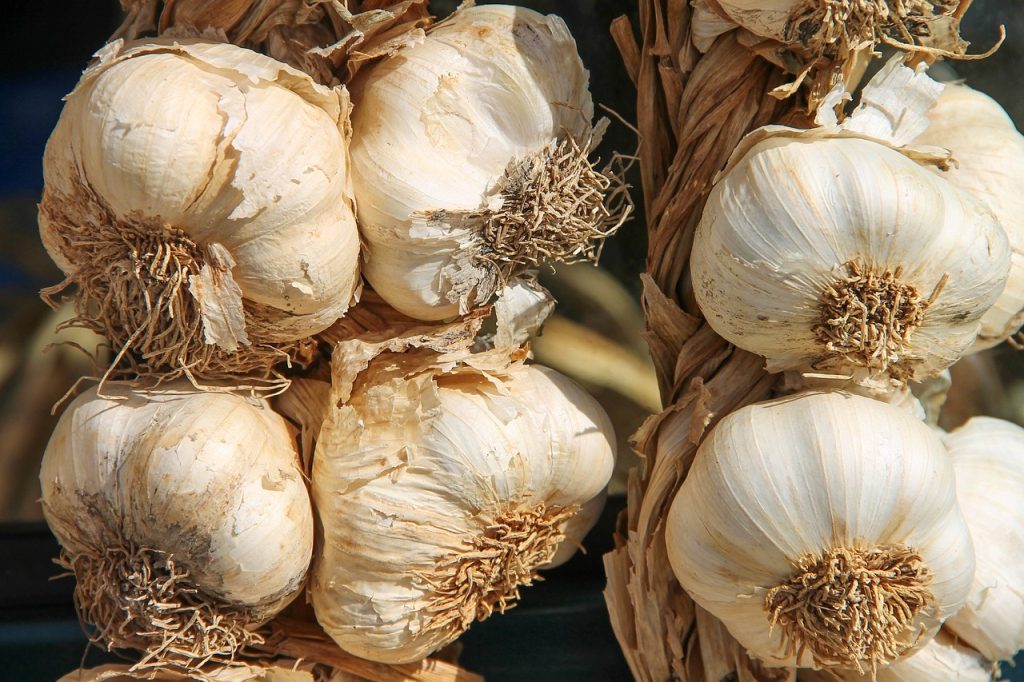
Choose from a variety of hardneck and softneck garlic types, each offering unique flavors and storage capacities.
Spinach
Spinach is a quick grower, ready to harvest in as little as 4-6 weeks. Its versatility in the kitchen makes it a favorite for salads, sautés, and everything in between.
Spinach is particularly frost-tolerant, capable of surviving surprisingly cold temperatures, especially when given a simple protective cover like a floating row cover or a cold frame.
Broccoli
Broccoli is another fall favorite that benefits from the cooler weather, which can improve its flavor and texture. For a successful fall harvest, opt for fast-maturing varieties that can go from seed to harvest before the deep freeze sets in.
Broccoli not only provides a hearty crop but also brings a visually appealing element to your garden with its lush, green heads and leaves.
Carrots
The sweet, crisp taste of carrots harvested in fall is unbeatable. Cooler soil temperatures can enhance their flavor, making them a sweet treat straight from the garden. Carrots require a bit of patience and well-drained soil, but the reward is worth the wait.
Choose varieties like ‘Nantes’ or ‘Danvers’ for their adaptability to a range of soil conditions and their excellent storage capabilities.
Peas
Peas are a cool-season crop that can be planted in late summer for a fall harvest. They prefer cooler temperatures and can even tolerate a light frost, making them ideal for extending the gardening season.

Whether you choose snow peas, snap peas, or shelling peas, their sweet flavor and crisp texture are a welcome addition to any fall garden.
Beets
Beets thrive in the cool weather of fall and can be harvested for both their flavorful roots and nutrient-rich greens.
They’re relatively easy to grow and can be planted in succession for a continuous harvest. Beets come in a variety of colors, from the traditional deep red to golden and even candy-striped, adding a burst of color to your fall garden and your plate.
Swiss chard
Swiss chard is a vibrant and versatile green that thrives in the cooler temperatures of fall. Its large, colorful leaves can withstand light frosts, making it an ideal crop for extending the gardening season.
Swiss chard is not only a visual delight with its rainbow of stem colors but also a nutritional powerhouse, packed with vitamins and minerals. It’s as easy to grow as it is beautiful, requiring minimal maintenance and offering a continuous harvest as you pick the outer leaves.
Radishes
Radishes are the sprinters of the vegetable world, maturing rapidly and adding a peppery punch to salads and dishes. Their quick growth cycle makes them perfect for fall gardening, with some varieties ready to harvest in as little as three weeks.

Radishes prefer the cooler days of autumn, which can enhance their flavor and crispness. For a continuous harvest, practice succession planting every two weeks.
Arugula
Arugula, with its distinctive peppery flavor, is a cool-season crop that excels in the fall garden. This fast-growing leafy green can be ready to harvest in just 4-6 weeks, making it an excellent choice for quick salads.
Arugula is frost-tolerant and can often survive the first few frosts of the season, especially with a bit of protection. Its ability to grow in partial shade also makes it versatile for gardeners with limited sunny spots.
Parsnips
Parsnips, with their sweet, nutty flavor, are a root vegetable that benefits from the cool temperatures of fall and even winter. They require a longer growing season than some other root crops, but the wait is worth it.
Frost not only tolerates parsnips but enhances their sweetness, making them a delightful addition to autumn and winter meals. Plant parsnips in early to mid-summer to allow them enough time to mature for a fall or early winter harvest.
FAQs about fall raised bed gardens
Why shouldn’t I start over each season?
Transitioning your garden between seasons without completely starting over keeps your garden productive year-round. It’s about evolving with the seasons, not resetting the clock.
How do I protect my fall crops from early frosts?
A simple row cover or mini hoop house can extend your growing season and protect your plants from light frosts. It’s an easy way to ensure your hard work pays off.

